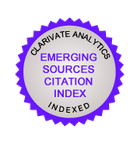ANTICANCEROGENIC ACTIVITY OF BRASSINOSTEROIDS IN LIVER TUMOR CELLS
https://doi.org/10.29235/1561-8323-2018-62-1-66-72
Abstract
In this study, we first characterized the effect of natural brassinosteroids, 24-epibrassinolide (EBl) and 28-homocastasterone (HCS), and synthetic analogs, (22S,23S)-24-epibrassinolide and (22S,23S)-28-homocastastone, on the growth of the cancer cell line Hep G2 (hepatocellular carcinoma), as well as on the catalytic activity of cytochrome P450, which participates in the metabolism of most procarcinogens. All four compounds at high concentrations suppressed the proliferation of the test cell line. It is also interesting that at low concentrations, 24-EBl, (22S,23S)-24-EBl and (22S,23S)28-HCS activated significantly the Hep G2 cell growth. All studied brassinosteroids, except for 28-HCS, inhibited the activity of CYP1A1 and CYP1B1. The effect depended on the structure of the side chain and was more pronounced in the case of the SS orientation of the hydroxyl groups at the positions C22 and C23 ((22S,23S)-28-homocastasterone). The results of this work suggest that the studied brassinosteroids (especially (22S,23S)-28-homocastasterone) can be used to create effective drugs for tumor prevention and treatment.
About the Authors
Olesya V. PanibratBelarus
Researcher
5/2, Kuprevich Str., 220141, Minsk
Polina S. Shabunya
Belarus
Ph. D. (Biology), Leading researcher
5/2, Kuprevich Str., 220141, Minsk
Sviatlana A. Fatykhava
Belarus
Senior researcher
5/2, Kuprevich Str., 220141, Minsk
Vladimir N. Zhabinskii
Belarus
Corresponding Member, D. Sc. (Chemistry), Assistant professor, Chief researcher, Deputy Head of the Laboratory
Peter A. Kiselev
Belarus
References
1. Khripach V. A., Zhabinskii V. N., de Groot Ae. Brassinosteroids. A new class of plant hormones. San Diego: Academic Press, 1999. 456 p.
2. Malíková J., Swaczynová J., Kolár Z., Strnad M. Anticancer and antiproliferative activity of natural brassionsteroids. Phytochemistry, 2008, vol. 69, no. 2, pp. 418–426. doi.org/10.1016/j.phytochem.2007.07.028
3. Hoffmannová L., Steigerová J., Strnad M. Anticancer Activities of Brassinosteroids. Brassinosteroids: Practical Applications in Agriculture and Human Health. Bentham, Science Publishers, 2012, pp. 84–93. doi.org/10.2174/978160805298 111201010084
4. Kisselev P. A., Panibrat O. V., Sysa A. R., Anisovich M. V., Zhabinskii V. N., Khripach V. A. Flow-cytometric analysis of reactive oxygen species in cancer cells under treatment with brassinosteroids. Steroids, 2017, vol. 117, pp. 11–15. doi. org/10.1016/j.steroids.2016.06.010
5. Schwarz D., Kisselev P., Cascorbi I., Schunck W. H., Roots I. Differential metabolism of benzo[a]pyrene and benzo[a]- pyrene-7,8-dihydrodiol by human CYP1A1 variants. Carcinogenesis, 2001, vol. 22, no. 3, pp. 453–459. doi.org/10.1093/carcin/22.3.453
6. Tompkins L. M., Wallace A. D. Mechanisms of cytochrome P450 induction. Journal of Biochemical and Molecular Toxicology, 2007, vol. 21, no. 4, pp. 176–181. doi.org/10.1002/jbt.20180
7. Liahovich V. V., Сyrlov V. V. Induction of xenobiotics metabolism enzymes. Novosibirsk, Nauka, 1981. 240 p. (in Russian).
8. Sysa A. G., Kiselev P. A., Zhabinskii V. N., Khripach V. A. Effect of the structure of the brassinosteroid side chain on monooxygenase activity of liver microsomes. Applied Biochemistry and Microbiology, 2010, vol. 46, no. 1, pp. 23–27. doi. org/10.1134/s0003683810010035
9. Van Meerloo J., Kaspers G. J., Cloos J. Cell sensitivity assays: the MTT assay. Methods in Molecular Biology, 2011, vol. 731, pp. 237–245. doi.org/10.1007/978-1-61779-080-5_20
10. Zhabinskii V. N., Khripach N. B., Khripach V. A. Steroid plant hormones: Effects outside plant kingdom. Steroids, 2015, vol. 97, pp. 87–97. doi.org/10.1016/j.steroids.2014.08.025
11. Zhang L., Jin Y., Huang M., Penning T. M. The Role of Human Aldo-Keto Reductases in the Metabolic Activation and Detoxication of Polycyclic Aromatic Hydrocarbons: Interconversion of PAH Catechols and PAH o-Quinones. Frontiers in Pharmacology, 2012, vol. 3, pp. 1–12. doi.org/10.3389/fphar.2012.00193
12. Chaudhary A., Willett K. L. Inhibition of human cytochrome CYP 1 enzymes by flavonoids of St. John’s wort. Toxicology, 2006, vol. 217, no. 2–3, pp. 194–205. doi.org/10.1016/j.tox.2005.09.010
13. Schwarz D., Kisselev P., Schunck W. H., Roots I. Inhibition of 17β-estradiol activation by CYP1A1: Genotype- and regioselective inhibition by St. John’s Wort and several natural polyphenols. Biochimica et Biophysica Acta (BBA) – Proteins and Proteomics, 2011, vol. 1814, no. 1, pp. 168–174. doi.org/10.1016/j.bbapap.2010.09.014
14. Zanger U. M., Schwab M. Cytochrome P450 enzymes in drug metabolism: regulation of gene expression, enzyme activities, and impact of genetic variation. Pharmacology & Therapeutics, 2013, vol. 138, no. 1, pp. 103–141. doi.org/10.1016/j. pharmthera.2012.12.007













































